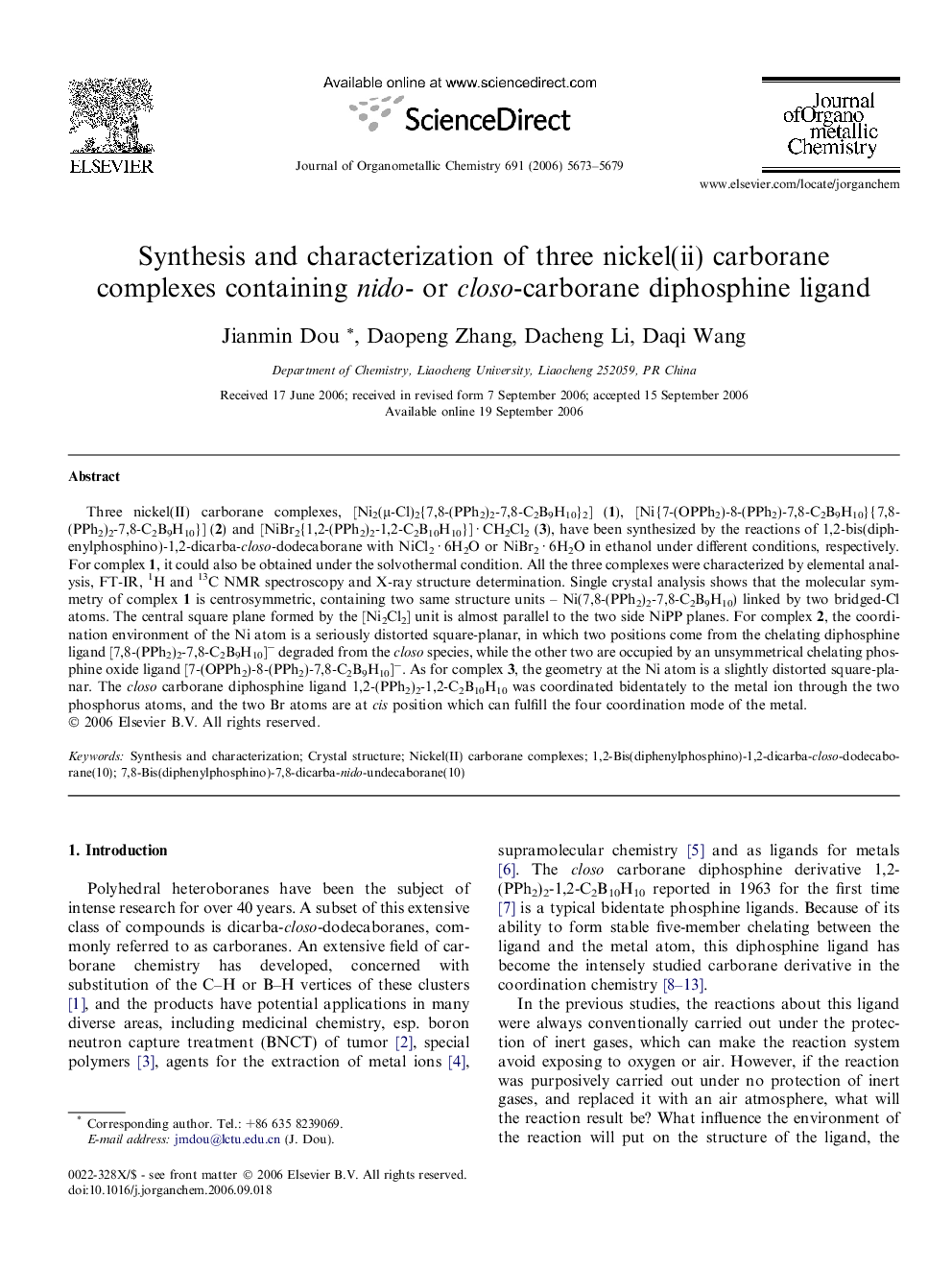| Article ID | Journal | Published Year | Pages | File Type |
|---|---|---|---|---|
| 1328391 | Journal of Organometallic Chemistry | 2006 | 7 Pages |
Three nickel(II) carborane complexes, [Ni2(μ-Cl)2{7,8-(PPh2)2-7,8-C2B9H10}2] (1), [Ni{7-(OPPh2)-8-(PPh2)-7,8-C2B9H10}{7,8-(PPh2)2-7,8-C2B9H10}] (2) and [NiBr2{1,2-(PPh2)2-1,2-C2B10H10}] · CH2Cl2 (3), have been synthesized by the reactions of 1,2-bis(diphenylphosphino)-1,2-dicarba-closo-dodecaborane with NiCl2 · 6H2O or NiBr2 · 6H2O in ethanol under different conditions, respectively. For complex 1, it could also be obtained under the solvothermal condition. All the three complexes were characterized by elemental analysis, FT-IR, 1H and 13C NMR spectroscopy and X-ray structure determination. Single crystal analysis shows that the molecular symmetry of complex 1 is centrosymmetric, containing two same structure units – Ni(7,8-(PPh2)2-7,8-C2B9H10) linked by two bridged-Cl atoms. The central square plane formed by the [Ni2Cl2] unit is almost parallel to the two side NiPP planes. For complex 2, the coordination environment of the Ni atom is a seriously distorted square-planar, in which two positions come from the chelating diphosphine ligand [7,8-(PPh2)2-7,8-C2B9H10]− degraded from the closo species, while the other two are occupied by an unsymmetrical chelating phosphine oxide ligand [7-(OPPh2)-8-(PPh2)-7,8-C2B9H10]−. As for complex 3, the geometry at the Ni atom is a slightly distorted square-planar. The closo carborane diphosphine ligand 1,2-(PPh2)2-1,2-C2B10H10 was coordinated bidentately to the metal ion through the two phosphorus atoms, and the two Br atoms are at cis position which can fulfill the four coordination mode of the metal.
Graphical abstractThree nickel(II) carborane complexes, [Ni2(μ-Cl)2{7,8-(PPh2)2-7,8-C2B9H10}2] (1), [Ni{7-(OPPh2)-8-(PPh2)-7,8-C2B9H10}{7,8-(PPh2)2-7,8-C2B9H10}] (2) and [NiBr2{1,2-(PPh2)2-1,2-C2B10H10}] · CH2Cl2 (3), have been synthesized by the reactions of 1,2-bis(diphenylphosphino)-1,2-dicarba-closo-dodecaborane with NiCl2 · 6H2O and NiBr2 · 6H2O in ethanol under different conditions, respectively. For cluster 1, it could also be obtained under the solvothermal condition. All the three clusters were characterized by elemental analysis, FT-IR, 1H and 13C NMR spectroscopy and X-ray structure determination.Figure optionsDownload full-size imageDownload as PowerPoint slide
